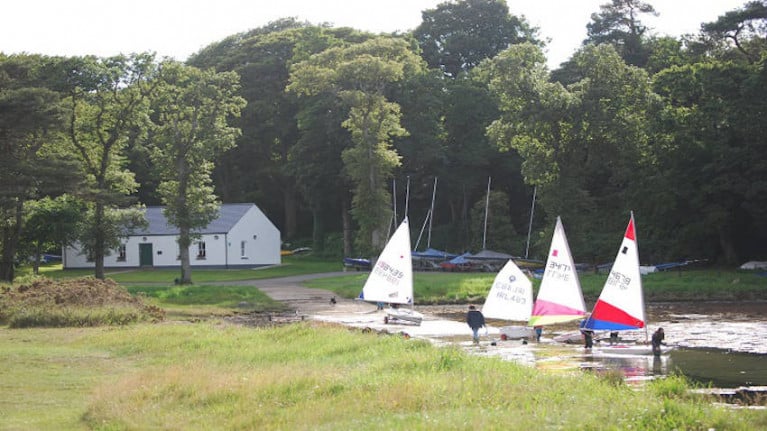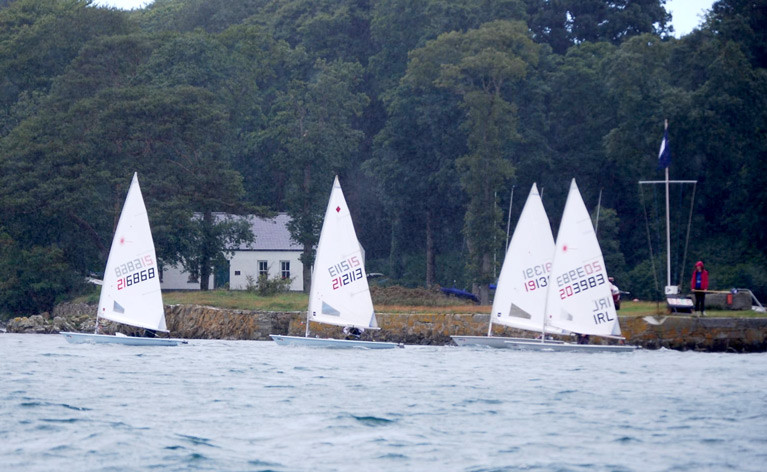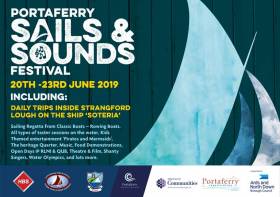Displaying items by tag: Strangford Sailing Club
Strangford Sailing Club Selected as Finalist for RYA/Yachts & Yachting Club of the Year 2021
Strangford Sailing Club has been named among the finalists for RYA and Yachts & Yachting Club of the Year 2021.
Ten clubs across the UK have been selected by the RYA Awards Panel, with online voting now open.
The Co Down club is the only Northern Ireland finalist this year for the annual gong, which saw Strangford Lough Yacht Club and East Antrim Boat Club in the running this time last year.
The RYA and Yachts & Yachting Club of the Year award, supported by Gallagher, recognises the outstanding achievement of sailing clubs across the UK and promotes the hard work and dedication that goes into running a successful club.
Voting closes on Monday 25 January, and the award presentations and overall winner announcement will be made at the RYA Virtual Dinghy Show on 27-28 February.
Strangford Sailing Club Members Return Safely To Boating
As lockdown eased in Northern Ireland, Strangford Sailing Club’s Commodore Tony McLaughlin was busy working with his committee members on a plan of how to safely reopen in line with UK Government advice.
He explains the measures the club took and how they've been able to ensure safety for their members as they get back on the water.
When did the club close?
On 24 March, a notice was sent out to members letting them know that the Strangford Sailing Club Committee was planning for a Covid-19-driven 2020 season. All our members were encouraged to follow the UK Prime Minister advice and stay at home and avoid unnecessary travel. That also meant staying away from the sailing club.
In line with further Government guidance, we formally closed the club on the 4 April. Members were advised not to access the site or use any of the facilities.
SSC Virtual Regatta Sailing was started on 11 May to keep some of the adults and children occupied during the lockdown period. We ran three sessions per week.
How long was the club closed for?
The club was closed for two months and the SSC Committee agreed that prior to activities restarting SSC must await and comply with guidance issued by the NI Executive, RYANI and National Trust (the club’s landlord).
The National Trust started their restricted opening on 3 June and SSC followed suit with our first Junior Sailing session starting on Tuesday 9 June.
How did you go about reopening?
A Covid-19 subcommittee reviewed how we could safely operate and reopen based on Government recommendations. Email, phone calls and audio conferencing proved invaluable in keeping everyone informed.
What precautions did you take?
To ensure that we could adhere to distancing and hygiene rules SSC adopted a ‘Sail and Go Home’ philosophy. Essentially sailors arrive and go home in their sailing gear thus avoiding the clubhouse. The clubhouse is closed except for the use of the toilets.
Precautions also included reducing the size of sailing groups. For example, the junior section was split into fleets with the parents being responsible for the coordination and training of each group.
For our multi-hander fleets such as the Flying Fifteen and the safety boats, we have followed the principle of family pairings. With small group sizes, furlough and no school, our sailors have benefitted greatly from being able to be flexible; choosing appropriate days when the weather is best suited to the ability of the sailor.
We also issued documents to members outlining all of our advice and guidelines. These included a ‘Back to Sailing Activities’ document and a ‘Juniors – Covid-19 Operations’ document. To help the younger members we also made a video which simply illustrated all the distancing and hygiene protocols (credit must go to Leon Coole for his hard work on the video).
How have members reacted to the club being reopened?
I am very proud at how Strangford Sailing Club and its members have responded during the lockdown and the gradual lifting of the Covid-19 restrictions.
Members have volunteered to assist with running sailing sessions. The club has been able to facilitate sailing for small groups of sailors, while maintaining social distancing.
SSC have enough parental support to get our junior sailors out on the water twice a week and we plan to alternate skills training and race training each week throughout the summer.
Members have been very supportive and accept the fact that changing rooms and showers are out of bounds. Everyone has accepted the need to social distance and largely adhere to the issued guidance.
What is now available at the club?
Organised sailing sessions are scheduled for five times per week:
- Flying Fifteen/RS400 racing is scheduled for Wednesday evening and Saturday afternoons.
- Laser racing is scheduled for Sundays and they are welcome to join FF fleet.
- Topper sailing groups are scheduled for Tuesday and Friday evenings.
- Super Starters in Picos, Toppers and Optimists sail on an ad-hoc basis.
Would you have any advice for other clubs who have not yet reopened?
Embrace the challenge and make positive changes. Now is the time to recruit assistance from members and junior parents. Everyone working together as a team will help to allow sailing to restart. I would suggest that members are asked to help with safety cover, launching, rigging, trolleys, race officer etc.
Some of the other sailing clubs on the lough have followed suit to start their junior sailing using our template.
I am sure social activities will resume in the near future, but currently we will be complying with the current guidelines and restrictions to keep everyone safe.
Dinghy Racing Resumes at Strangford Sailing Club
Strangford Sailing Club enjoys a stunning location on the northern shore of Strangford Lough Narrows in the Castleward Estate and has occupied that site for about 40 years. After the long layoff due to COVID 19, members have been back training and racing, with all the required safety precautions, the latest outing a testing one yesterday (Sunday) in a very fresh breeze.
The fleet mainly consisted of Lasers and a RS 400, racing in a mix of sunshine, rain and plenty of wind. They managed two exciting races around Castleward Bay for an experienced fleet of sailors, but there were capsizes and a ripped spinnaker.
The club has also been heralded by RYANI for completing its membership census in record time. The deadline is Thursday 13th August.
Portaferry is preparing for a four-day Sailing and Music and family fun festival which will be the biggest maritime event to come to Ards Peninsula since the very popular ‘Galway Hooker Festival’ of many years ago.
The event is being hosted by Portaferry Sailing Club and will centre around their Club House on the Shore Front. Events will spread out from the Club to all parts of the town ensuring plenty of family fun for everyone.
The Club is expecting boats from all over the lough and North Down, Scotland, England, Wales, Isle of Man & ROI and farther afield.
The boats will gather on Thursday and Friday for registration, race on Saturday the 22nd in Strangford Lough and have a final Parade of Sail on Sunday the 23rd.
The festival highlight is a unique opportunity for the public to engage on the water and to cruise the lough on the beautiful boat “Soteria” and for game of thrones fans an opportunity sail past the famous original filming ground of “Winterfell” not forgetting two game of thrones doors one in Strangford and one in Portaferry.
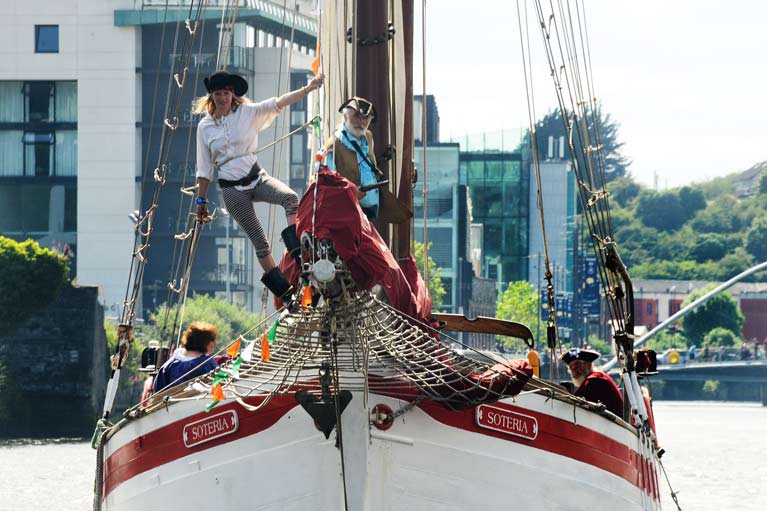 The Gaff-rigged sailing schooner 'Soteira' built in 1932 will visit Portaferry Sails and Sounds Festival
The Gaff-rigged sailing schooner 'Soteira' built in 1932 will visit Portaferry Sails and Sounds Festival
Other tours include guided walking tours and are available to book via www.ticketsource.co.uk/ardsandnorthdown
There will also be Skiff racing taster sessions and a very special Water Olympics with a twist, and if you fancy kayaking now’s your chance for a taster session with the Mobile team adventure (go to the website to book) for registration and other bookings events see programme via sails and sounds on facebook/website… don’t miss out!
Food Tasting
To complement the sailing, there will be local food outlets promoting local produce food tasting and cooking demonstrations and even a chance to go foraging cook food from the water’s edge The visiting public will be entertained by traditional dancing from both our Irish and Scottish heritages and giving displays and competing at several open-air venues. Portaferry’s Bars and restaurants are also gearing up for the Festival with live music and special food menus to keep locals and visitors replenished.
The Festival committee will be providing crafts for kids, kite making, treasure trail even chance to find some Portaferry Rocks, art competitions, street entertainment, inflatables, face painters, and much, much, more. In addition, there will storytelling, dress -up and crafts at the Portaferry Library free open days at the RNLI and QUB.
MINESTO will be demonstrating their Deep Green energy project on Strangford lough our local, PAST Maritime Museum will be doing an Exhibition of 1000 years of ferry service which will complement the new project around the town “FERRY DOORS” and there will be photo opportunities in the ‘Pirate Photo Booth’ and there's a chance to meet Portaferry's very own Captain Jack Sparrow.
There will be information stands by the local groups and emergency services and opportunity to meet the big lottery community winners Ards Peninsula 1st Responders.
Theatre entertainment @ Portico’s “Anthony Toner” celebration of his new album “Our Lady of the Wind and Rain” Sails and Sounds Festival will have music from Scotland’s Box O Banana’s and Ireland's Hair o the Dog Irish traditional band and “Many of the owners and crew members of the boats are musicians themselves, so this is a double whammy for them”.
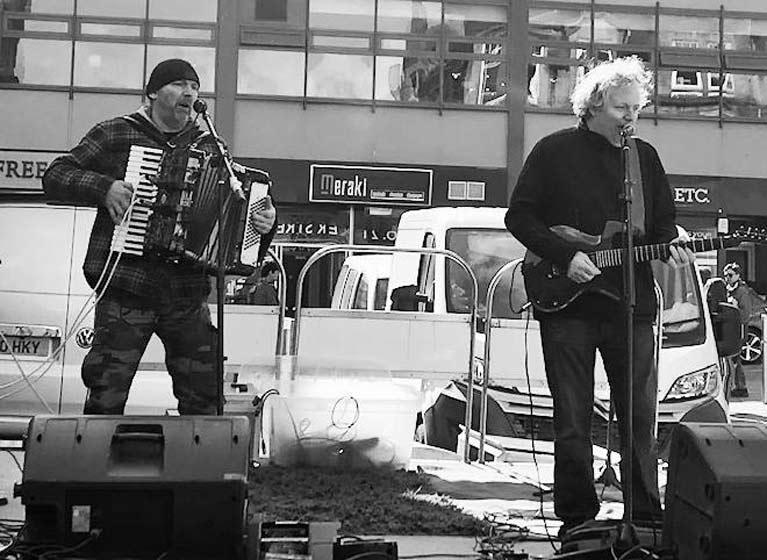 Box o bananas on stage
Box o bananas on stage
For all gin, vodka and whiskey lovers there is an afternoon of “Tastes of the Peninsula” all products from the local distillery Echlinville tickets £20 available Portaferry Sailing Club.
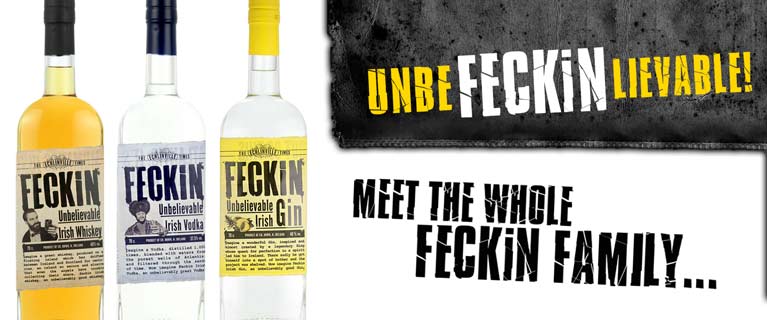
Look out for details of all events, locations and times to be published and distributed all over the province in the near future.
The festival programme can be found on the exclusive website or follow on facebook, for updates and festival information.
There are also trips aboard the Schooner ‘Soteria’ on Strangford Lough, Kayaking and walking tours
Special thanks goes to the Ards and North Down Borough Council & Dept for Communities for their supporting the festival This promises to be one of the highlights of the summer and will involve many volunteers and local business owners who will go out of their way to extend a welcome to all visitors whether they come by land or by sea.
Strangford Sailing Club
Strangford Sailing Club, Strangford, Co. Down, N. Ireland. Tel: (028) 4488 1404
Have we got your club details? Click here to get involved



























